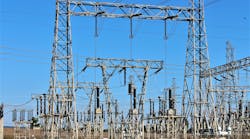Did a parent or teacher ever tell you “every action has consequences”? As we gain experience in life, we learn how true those words are. They also apply to decisions by companies and corporations. Those of us working on the technical side in the power business may sometimes lose sight of the fact that power companies, particularly regulated utilities, thrive or potentially suffer based on the opinions rendered by financial rating entities about technology decisions we are making and sometimes even more ethereal issues like the business climate or tax laws we face.
Let’s start with a surprising recent example. Many companies predicted a significant reduction in business expenses when the Federal Corporate Tax rate was reduced from 35% to 21% effective this year. Some companies even offered bonuses and pay increases to their employees. So wouldn’t all companies benefit when the taxes they must pay are reduced? After all, net income is what is left for company owners after all expenses, including taxes, are paid. Well, Moody’s Investor Service, a major credit rating and financial research firm, actually determined that the tax reduction would likely be negative near term for regulated utilities and they lowered their outlook on the regulated utilities sector for investment as a result. The reason is that utilities collect revenues from customers for deferred tax payments and historically these monies became part of the companies’ operating cash flow used to run the businesses. Lower taxes mean utilities will collect less revenues and this will reduce operating cash flow and also negatively affect debt coverage ratios, which in turn increases risk for utilities.
Most of us never saw that one coming … and there is not a lot utilities can do about it in the near term because most utilities are carrying fairly high levels of debt over the next several years according to Moody’s. So what can us as technical managers do about issues like this? Well, this was a tough one because it resulted from federal action and affects everyone. However, companies with a higher level of debt, increasing dividends, or high reliance on debt financing may be more adversely impacted.
There are recent examples that indicate how utility technical decision makers can directly impact the perceived risk of their company’s operations. Last month we ran an update about S&P Global Ratings that revealed how that rating entity evaluates technology decisions by companies to determine if they are increasing risk exposure or making choices that support rate base growth or otherwise improving company stability. The example S&P highlighted was blockchain technology, which they believe has the potential to help or negatively impact utilities, depending on how it is used. However, S&P mentioned another example, which may be closer to home for more companies: smart meters. Smart meters are a major component of the billions in smart grid investment being made by utilities. Other significant investment categories include distribution automation and various advanced smart grid technologies. The key for technical decision makers and utilities is whether the investment will reduce the company’s financial or regulatory risk exposure, support rate base growth, enhance reliability, or result in cost savings for customers, all of which are generally favorable for regulated utilities' credit quality.
S&P suggested a modicum of uncertainty about smart meters under certain circumstances. The same would most certainly be true for advanced distribution management technologies, blockchain and other technologies utilities must consider and either include in their modernization programs or avoid. The timeframe for implementation, the certainty of cost savings, regulatory acceptance and other factors help determine if rating entities will consider the technology move to be a benefit or credit risk. As the technical advisers and decision makers for our companies, we must develop sound business cases for our recommendations, considering the same issues the rating agencies will, and we must make sure that we lead and follow our efforts with sound education programs and communications.
New technologies can be enablers or disrupters for utilities, and sometimes outcomes are difficult to predict. However, the credit rating and business outlook assessment for utilities is not all that unpredictable if we look for precedents and pay attention to the details.


